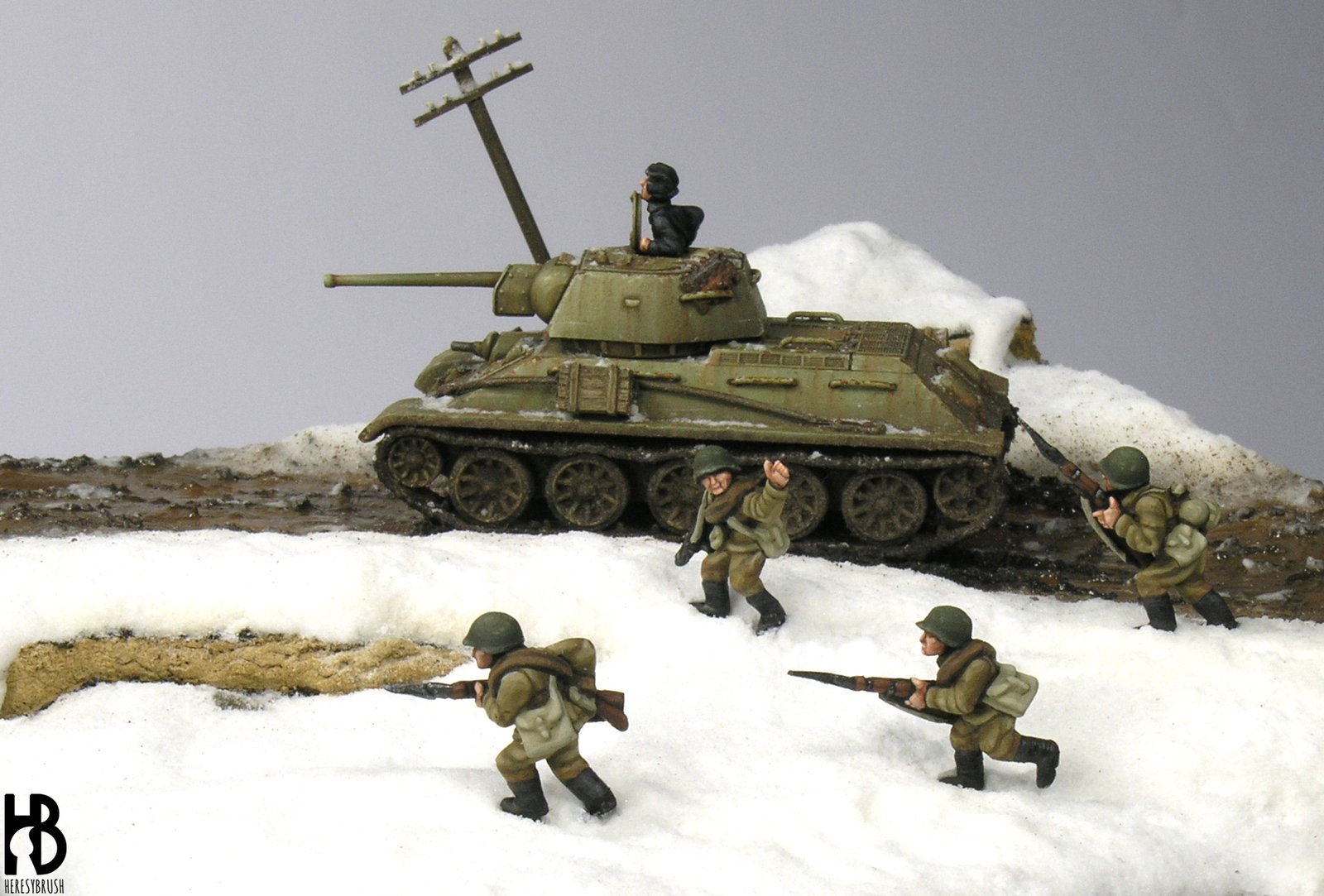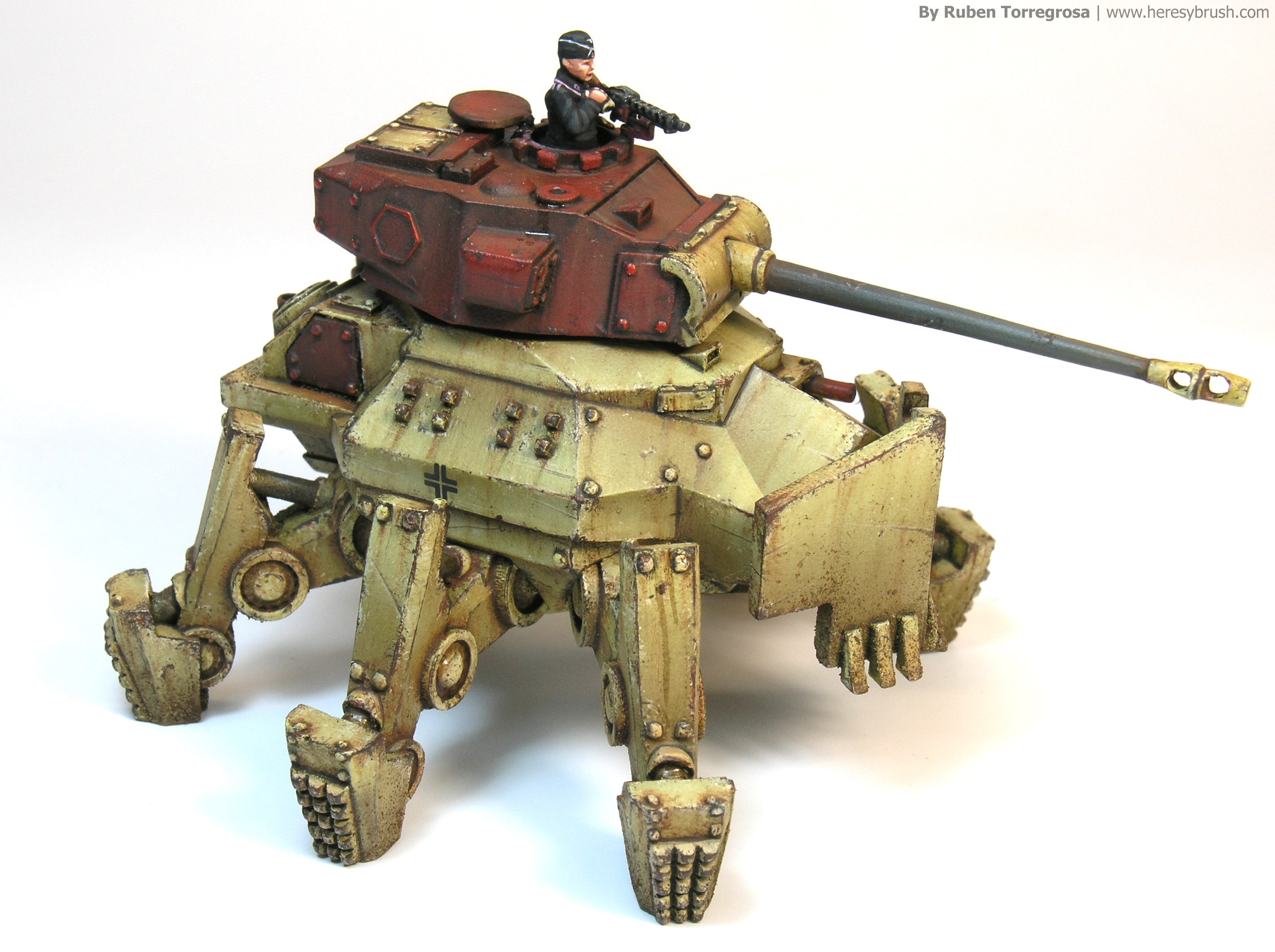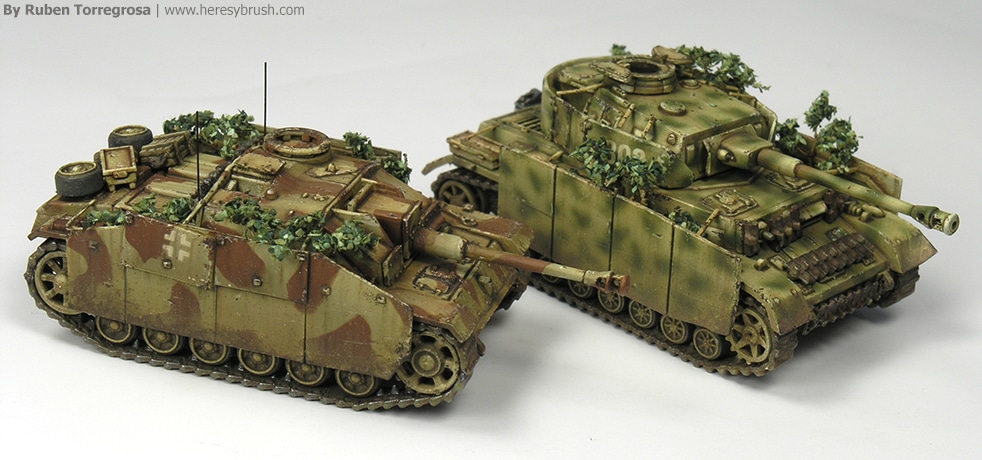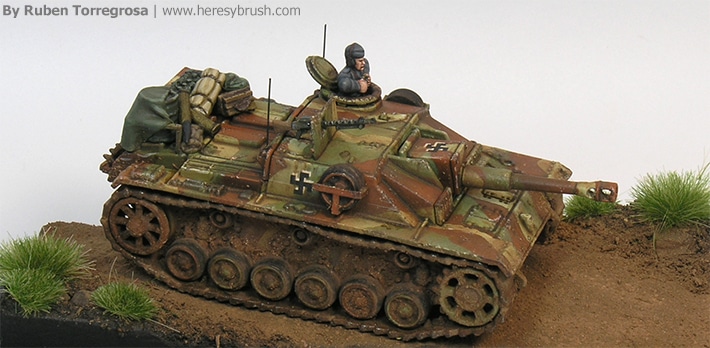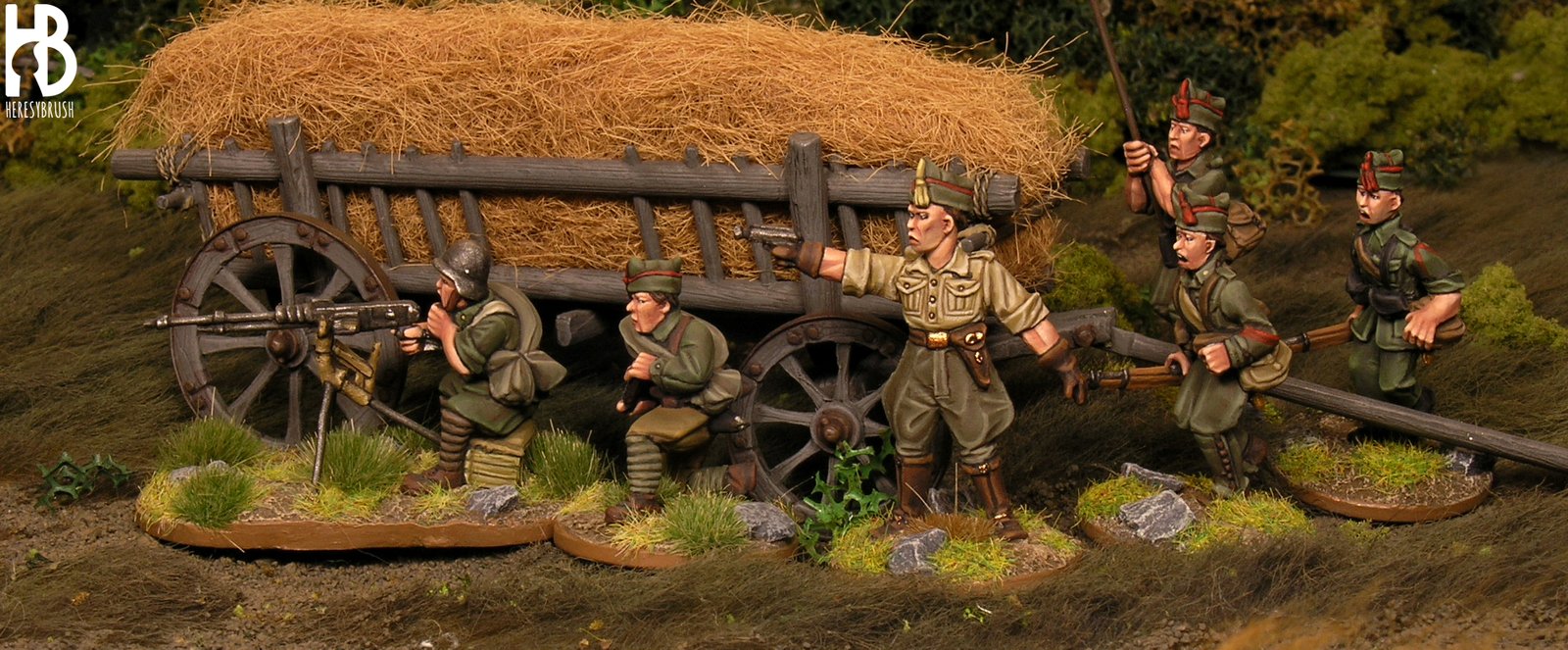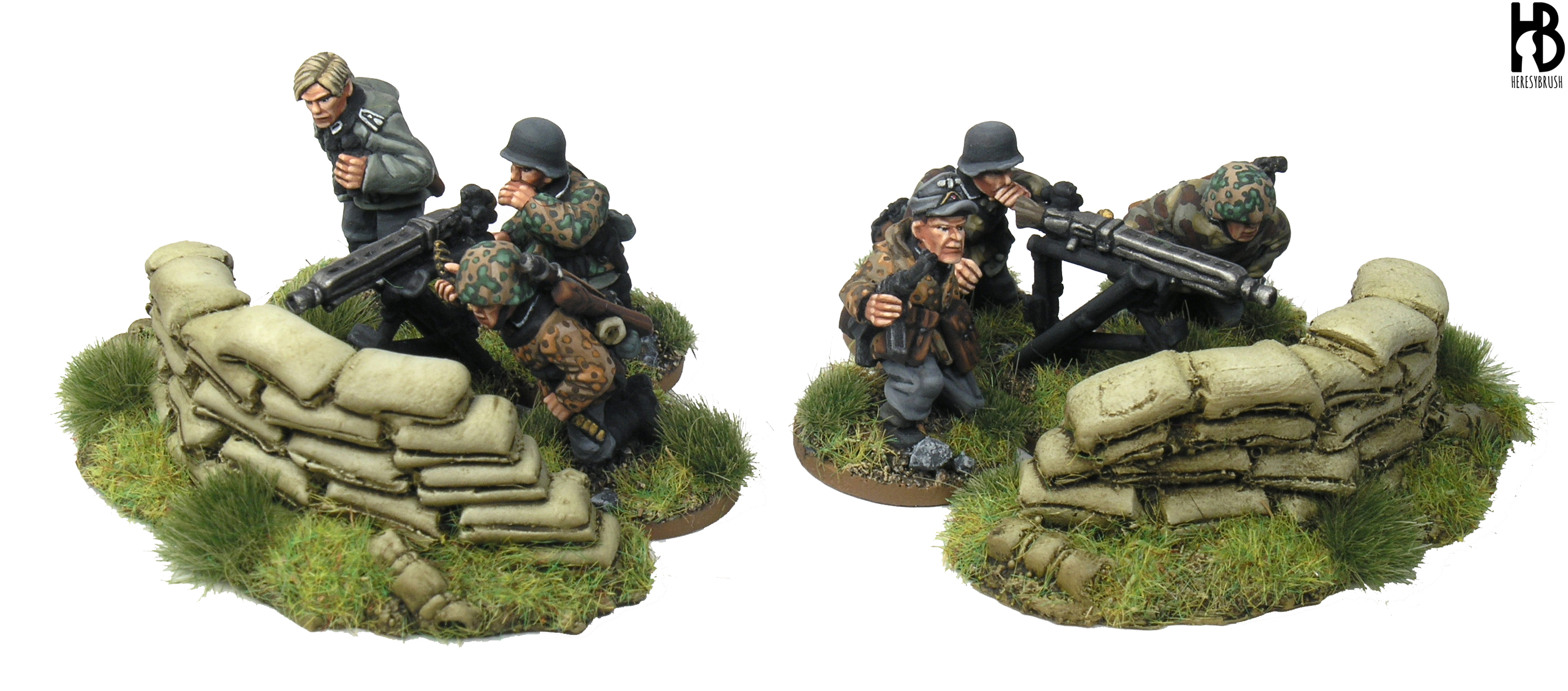There are many ways to represent the sand base in our models or dioramas. We can just fix modeling sand with white glue and then paint it, we can use ready-to-use products, we can sculpt the texture, etc. In this post I want to explain another simple way using sands and clays from nature. You can find more information about how I preprared the vignete in the last issue of Wargames: Soldiers&Strategy. This way is not the best or the worst, it is just another way. I like it because I don’t have to paint the sand and therefore I…
Decals, transfer and stencils
Decals, transfer or stencils? Nowadays we have different possibilities when we want to put the Balkan cross in a Panzer IV, or the allied start in a Sherman. However, decals for vehicles are dominating the Wargames, thanks to games such as Flames of War or Bolt Action. But in large scales we can find other options, like transfer or stencils, and we can also use them for our 15mm models. Decals and transfer are too similar -a printed film above a paper-, but the application is different. Using decals, we wet the paper in first place, and when the decal…
How to paint 15mm tanks: German spider mech
While I am learning new hobbies (and sports) in this lovely Finish land, such as ice swimming, ice hockey or cross-country ski, I had enough time to paint and prepare a painting guide featuring an interesting Panzermech from ClockWork Goblin miniatures. I love this theme! In the past, I painted a couple of walkers from DreamPod9, and I currently attempt to paint as many E-series tanks as I can from Forged in Battle or Heer46. All in 1/100 scale or 15mm, of course!, my preferred scale. In this occasion, I’ve prepared a complete painting guide. However, I want to notice…
Weathering on horizontal panels in 15mm tanks
It’s very common to observe impressive streaking effects on vertical surfaces in Flames of War vehicles. However, we can’t apply the same effect on horizontal panels, because the gravity result is different, obviously. Here, I want to explain different ways or tools to work the horizontal panels. In vertical surfaces enamels and oils are usually used in this way: first we paint dots or vertical stripes with different colors. And then we blend all colors using a brush moistened in white spirit, by applying vertical strokes. The result are interesting vertical streaks. But these are illogical on a horizontal surface!.…
How to do a dusty road
Because I’m currently living in Finland, from a while I wanted to paint a Finish vehicle. First, I thought about a captured soviet T-26 tank. But the Stug III G it’s more impressive!. And I decided to display it in a dusty road. After gathering some information, thanks to some friends, I decided to paint a tritonal camouflage, very similar to the German one. And although I prepared a mud base when I started this project (because the ambient influence!), the Finish Stug tanks fought in the Continuation War, in Jun and July of 1944. Therefore, I switched the viewpoint…
Videotutorial – How to paint faces in 28mm miniatures
One month ago I prepared a videotutorial about how to paint faces, which was published in a new blog, ModelBrush, created beside some friends. And I wanted to share it in my personal blog, in order to complement another old article about the same topic, but based in a different painting style (in Spanish): como pintar caras en 28mm. The comparison between both techniques it could be interesting!. NOTE: set the quality to 1080p FullHD The face is one of the most important parts of one minature, because once it’s painted, the model finally “comes alive” . Therefore, it’s important…
Dust effects
One of the most interesting weathering effects on vehicles is the dust, above all if our model has fought in wars with few paved roads, like the Spanish Civil War o the Second War World in Russia or Africa.However, first and foremost we have to think about several points. 1) Where is placed our model. For instance, isn’t the same the dust generated in the African desert than the dust generated in an European road. 2) How many dust we want to represent, a soft effect to avoid masking other details, or a strong effect. And 3) decide the method…
How to make mud
We have spoken several times about how to do mud on the undercarriage, using pigments or pastels like tool. In this occasion, I propose you other simple way to use them, with one additional idea: simulate a granulated texture. To explain this process, I have used a 15mm (1/100 scale) miniature from The Plastic Solider. As I told before, the main tool will be the pigments. Nowadays, we can find a really enormous amount of pigment colors on the market. Thus, I have an important collection of pigments in my hands, so I can get any color I want. I’m…
PaintingWAR: WWII German army
After a year of work, finally, I have the pleause to announce my first painting monograph, about the WWII german army. Without a doubt, this little dream would never have been possible without the invaluable help of the editor group of the Spanish wargames magazine, BreakingWAR. I will be eternally grateful with them for the opportunity! Here you can find a review from ModelDads, whose website is absolutely recommendable!. With this first monograph, this editorial opens a new collection, called PaintingWAR. In each issue, presented in the same format of the magazine BreakingWar, different miniature painters will explain their techniques…
How to do dusty tires
Nowadays, I have less time and opportunities to write a new post in my Blog. But I’m still alive!. So, because I have painted a sci-fi vehicle in 15mm (1:100 scale) from Khurasan Miniatures, I’ve prepared this simple tutorial to simulate the dust on wheels in 15mm miniatures. Also, this is my first entry in English, and my english is a little bad. So, I apologize for any error!. If we yield to the logic, the ideal tool to simulate dust is a pigment. Because in the nature the dust is generated by small particles, like our pigments, we can…

